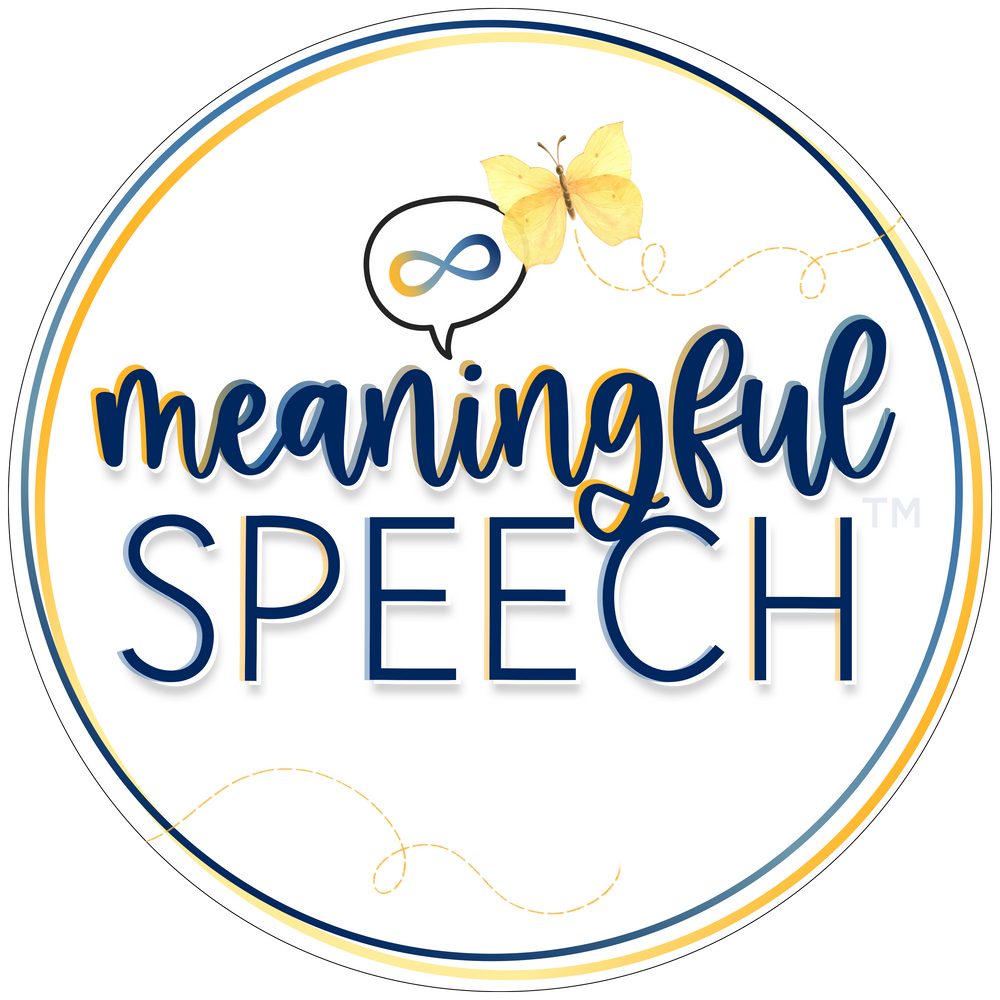Key terms to know about Gestalt Language Processing
Nov 19, 2025
Understanding the terminology around gestalt language processing (GLP) can make supporting a child feel clearer and far less overwhelming. Whether you’re a parent, SLP, OT, educator, or caregiver, this blog post will explain foundational terms in a simple, approachable way.
Before you dive in, here’s a quick (and exciting!) update you won’t want to miss.
What is gestalt language development?
Gestalt language development is the natural language development of gestalt language processors. It is a completely normal, natural way to develop language. Most autistic children are likely gestalt language processors, however, both neurotypical and neurodivergent children can develop language this way. There are six stages of gestalt language development. Not all children will need support going through these stages, but some will. Just like analytic language processors, gestalt language processors can be delayed in their language development too. Language processing is a continuum (from analytic language development to gestalt language development) and our work here at Meaningful Speech is focused on people that are “fully gestalt” and need language support.
It's our Early Black Friday Sale!
It’s one of our biggest sales of the year this week. Everything* at Meaningful Speech is 25% off using the code "BLACKFRIDAY" at checkout (*code not valid on payment plans). This includes courses, bundles, printables, communities, and webinars.
In addition, 25% of all sales will be donated to Lilly’s Voice, an organization providing AAC systems to minimally speaking and non-speaking individuals.
What is a gestalt?
Many people refer to gestalts interchangeably as “scripts'' but they’re much more than that. When a child is in Stage 1 of gestalt language development (see below), they are using gestalts to communicate. A gestalt is…
- Naturally acquired (it is not directly taught)
- Intonationally defined.
- As short as a single word or as long as a movie.
- Holds a larger meaning and usually tied to an emotional or dramatic experience.
- Most cannot be taken literally.
Let’s look at some examples:
- Long string of words stored from something someone said, media or music.

- Intonationally defined strings of language that may or may not be intelligible (easily understood) to others.

- Single word that holds a larger meaning (e.g. child uses single word “dog” anytime there is a dog, any pet, that dog song, the neighbor with or without their dog). If a child can label or name colors, shapes, numbers and letters but isn’t combining these words flexibly into 2+ word combinations, these single words may be stuck single word gestalts.

What are the stages of gestalt language development?
Stage 1: Delayed Echolalia
Scripting whole gestalts from life or media, single word gestalts, and/or intonationally defined strings of language from people, media, or books.
Example: "There's a monster at the end of the book!"
Stage 2: Mix and Match Stage or “Trimming down” (Partial Gestalts)
Mitigating larger Stage 1 gestalts into smaller chunks and also mixing and matching parts/chunks of Stage 1 gestalts into semi-unique utterances.
Examples #1 (mixing of two partial gestalts): "There's a monster + under there" = There's a monster under there.
Example #2 (Trimming down): "There's a monster."
Stage 3: Single Words and Two-Word Combinations
Breaking the script down to one word unit and/or making a new noun combination. Example: "monster", "scary monster", "monster red"
Stages 4-6: New Original Phrases or Sentences with Beginning Grammar, More Advanced and Complex Grammar
Putting word units together to make novel phrases or sentences. At Stage 4, children are using beginning grammar. At stages 5-6, children begin using advanced and complex grammar. Examples: “The monster goed under” (Stage 4) “The monster can’t get out” (Stage 5), “Shouldn’t he have come out from under the bed by now?” (Stage 6).
What is Natural Language Acquisition?
Natural Language Acquisition (NLA) is a framework first outlined in Marge Blanc’s book Natural Language Acquisition on the Autism Spectrum: The Journey from Echolalia to Self-Generated Language (2012). The framework is a description of gestalt language development developed by Blanc based on years of her own clinical research as well as the pioneering research of Dr. Barry Prizant, Dr. Ann Peters and their colleagues.
The framework provides us with a scoring system for the data we collect (spontaneous language samples) as well as how we can appropriately support gestalt language processors.
Want to dive deeper into child-led therapy, gestalt language development and neurodiversity-affirming practices?
There are so many ways to keep learning and growing as a parent or professional:
- There are many free podcasts, webinars and articles to get you started. A comprehensive list of resources can also be found on our website. We now have a FREE masterclass on echolalia and child-led therapy and a Beginner's Guide to AAC & Gestalt Language Processing that are perfect for anyone starting their learning journey or on the fence about purchasing our courses!
- Meaningful Speech Course or AAC + Gestalt Language Processing Course: Deepen your understanding of gestalt language processing and learn strategies to support gestalt language development with one of our self-paced courses or webinars.
- SLP Registry: Find speech-language pathologists experienced in supporting gestalt language processors and child-led therapy.
- Free Webinars and Articles: Access free information to further your own knowledge or get free resources you can share with others.
